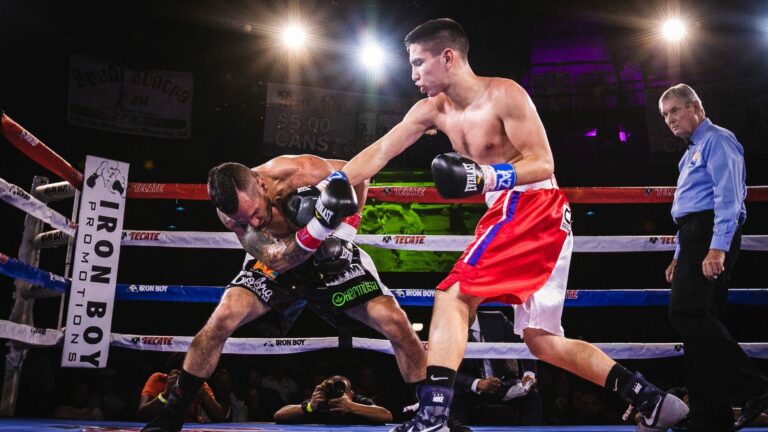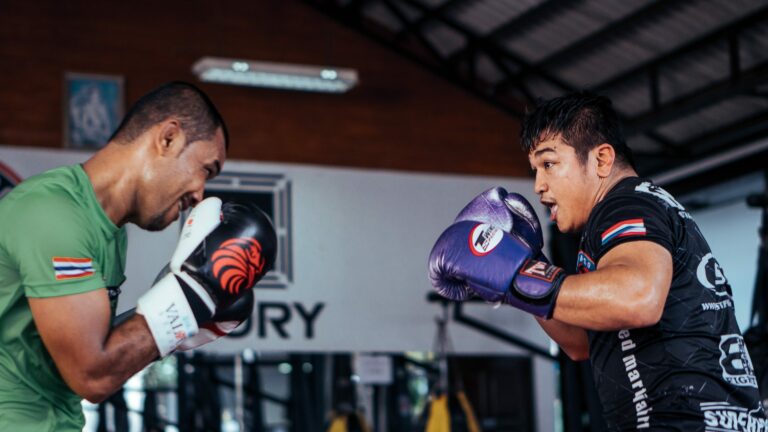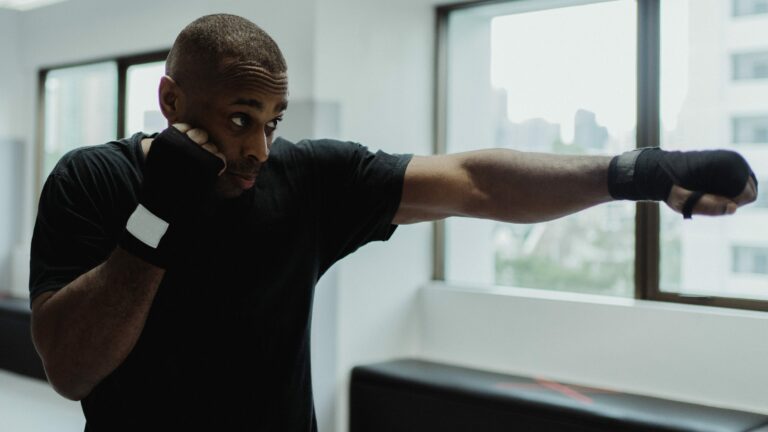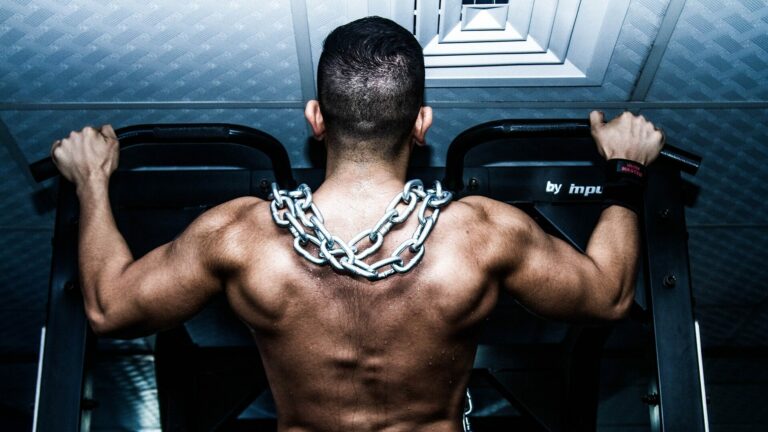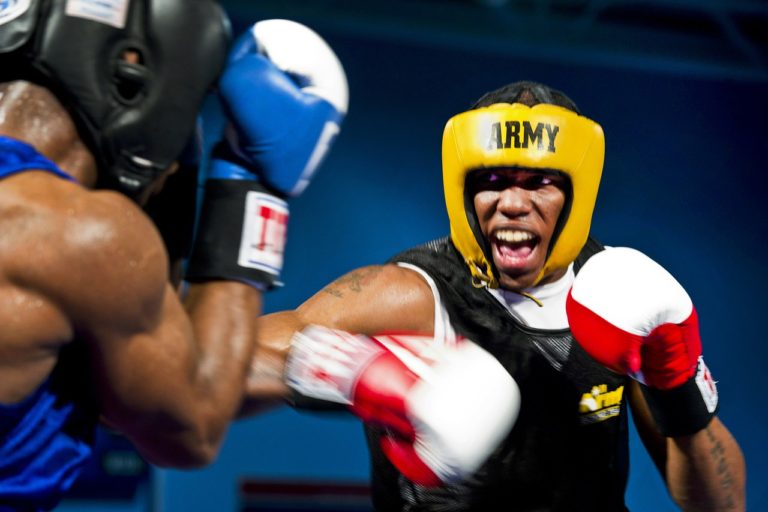Is Weight-Lifting bad for Boxing?

There are several ways of looking at this question but I think the most conclusive answer is actually that lifting weights is perfectly normal and good for boxing in moderation. There’s a stereotype floating around that big muscles can reduce maneuverability making you slower and your hindering your striking ability.
However, there are quite a few caveats to this ideology. First and foremost is the definition, what do you actually mean by weight lifting? Are you talking about body-building or power-lifting? If so then it would be reasonable to label weightlifting as detrimental to your boxing abilities.
Another reason people quickly assume that weight lifting is bad for boxing is that most weight-lifters have big muscles which require more oxygen. The theory is that the higher muscle mass would cause fatigue earlier and reduce cardiovascular endurance in the later rounds of the fight. While technically this is correct there have been many exceptions to this in history which we’ll discuss in further detail. However, the general consensus is that weight lifting is good for boxing in moderation.
Advantages of weight lifting in regards to boxing:
Power
Chances are, if you’re lifting weights and getting the right calorie intake/nutrition, you’re going to put on some weight on muscle. Now, if you do put more weight on it, you’re bound to have more power in your punches. Having more weight behind your punches will allow you to be more authoritative in the ring but it may also slow you down slightly.
I had a fighter I was training a few years ago, who had a lay off period for a couple of months and jumped up 20lbs in weight. When he started training again his endurance was much weaker but the difference in power was incomparable, I had to put the mitts down for a minute because of how hard he was hitting my hands!
So weight-lifting by itself isn’t much help for power because its a linear movement and boxers use completely different techniques and movements to generate power. However, if you gain muscle and weight as a result of lifting weights, that very well be useful for increasing power, providing it is done in a safe and correct manner with professional advice from nutritionists and trainers.
For a deeper insight into the effects that weight will have on power, head over to our article on How to increase boxing power. We cover a variety of ways to improve power but we’ve also produced a table to show the effect that weight will purely have on power.
Also, there are some weight-lifting exercises that are tailored to boxing, for instance, landmine punches that isolate the muscle groups used when throwing a punch which helps increase punching power.
Higher Lean Muscle-Mass gives weight advantage
One of the positives of weight lifting is that along with the correct diet, it’s an excellent practice for increasing muscle mass and reducing body fat. For aesthetics the advantages to this are self-explanatory, but what about for fighters?
Well, muscle stores water which is relevant to fighters because they often have to cut weight before a fight. This is because boxing has weight classes and around 24 hours before the fight, both boxers need to make the same weight on the scales. During a weight cut, fighters will try to extract as much water from their body to drop their weight, and the next day they replenish around 75% of that from regular eating and drinking.
Therefore having a higher muscle mass will allow you to have a weight advantage over your opponent on the day of the fight. Despite not being a boxer, Conor McGregor is an iconic example of this during his featherweight run. McGregor was big for a featherweight and his weight-ins drew significant attention because of how drained he looked. However, during the fights he was spectacular, and his power looked unreal compared to other featherweights because firstly, he’s naturally gifted with fast-twitch muscle fibers but secondly, he looked much more filled out compared to a lot of his opponents which was likely due to the big weight cuts he endured.
There is a lot of speculation surrounding weight cuts and whether they are actually detrimental to a fighter’s performance so it can’t be recommended, but in theory, they do allow fighters to gain a weight advantage.
Fast-Twitch Conditioning
You might have the terms “fast and slow-twitch muscle fibers” in the boxing world. What they are referring to is the composition of someone’s muscle material, fast-twitch muscle fibers hold little oxygen but can metabolize incredibly fast resulting in an explosive movement. Whereas slow-twitch muscle fibers can hold much larger quantities of oxygen but don’t metabolize as quickly which generally means lower power.
This means that someone with a high concentration of fast-twitch muscle fibers will be very explosive at the start of a fight but significantly slow down as the fight goes on. However, someone with a high concentration of slow-twitch muscle fibers will be able to keep the same pace throughout the duration of the fight or even increase without fading.

The muscle fibers are completely genetic but regardless of which type of muscle fiber is prominent, there are things that you can do to either improve power or cardiovascular endurance. One method of improving explosive power is doing boxing-specific weight-training exercises like landmine punches. This is an exercise where you hold one end of a weight bar up at your shoulder and thrust it forwards so that your arm becomes straight and weight is pushed forward, essentially mimicking the form of a boxing cross.
While many boxers incorporate this into their training it may not be an ideal exercise for every boxer to lift weight like this because it essentially conditions you to strike in singular movements which may be good for a heavyweight who is a big puncher and doesn’t need the best technical boxing abilities. But for a lightweight or welterweight, the ability to move freely is something that is absolutely necessary for those divisions.
Hand-speed (Boxing Weights)
Using weights for boxing can help be more explosive and increase hand speed. Many boxers use small 1 kg weights in each hand when shadow boxing, the theory is that by getting accustomed to punching with weights, their hand speed will improve even further when they are not using them. I’ve done these drills myself before and there is a noticeable difference after a while, it makes your hands feel much lighter after you’ve dropped the weights and shadow boxing without them almost feels effortless.
This is the routine I use for training with boxing weights, this type of weight training, almost will certainly make your boxing better, not worse:
| 1-minute shadow boxing |
| 30 seconds rest |
| 3-minutes shadow boxing with weights |
| 30 seconds rest |
| Repeat |
0.5-1.5 kg weights are the best weights for this exercise, going too heavy will reduce mobility and makes it easier to get injured, and using weights that are too light is pointless.
Disadvantages of weight lifting in regards to boxing:
Reduced Mobility
While weightlifting in moderation can help you in boxing, lifting too much will work against you. Let’s say hypothetically there is a boxer that is training and eating like a power-lifter, what challenges will they face? Well firstly, they’ll most likely have to start by eating in a calorie surplus to put on weight so they can lift heavier.
This is great for lifting, not for boxing. Before a fight, you want to maximize your lean muscle mass but not have too much extra weight on your frame as it will slow you down. Having more muscles will also require more oxygen and could hinder your cardiovascular endurance, especially if you aren’t accustomed to fighting at a higher weight.
That’s why if you look at all the top heavyweights, you’ll notice that hardly any have an impressive physique in regards to aesthetics. Out of the current top heavyweights: Joshua, Uysk, Whyte, Wilder, and Fury. Only one of them has a physique that you could regard as being from a weightlifter in Anthony Joshua.
Fury, however, has the worst physique out of the bunch by far, however, he’s probably the best heavyweight of this era. This doesn’t been that the best technical boxers will be out of shape, it just means that muscles and aesthetics aren’t particularly relevant when it comes to boxing.
The other thing that I noticed with lifting weights in boxing is that for some people it stiffens you up and limits you to linear movements. Boxing is all about fluidity and dynamics but for some people, repetitiously lifting weights will get you accustomed to singular movements. There isn’t anything necessarily wrong with, for a fighter that relies mainly on power, this may even be a good thing. But for a highly technical boxer, getting comfortable with striking in a one-dimensional style will be to their detriment.
Increasing risk of Injury
Injury from weight lifting isn’t uncommon which could prevent a fighter from training boxing which would severely hurt their career if they are competing professionally.
Another implication of lifting weights and boxing is that you increase your risk of injury, especially if you’re lifting heavy. In the case of an injury, a professional fighter would have to reschedule their bouts, go through rehabilitation, and recovery. All this time off could cause the skills of a fighter to become blunt over time, not to mention how the injury could affect their abilities as a whole.

